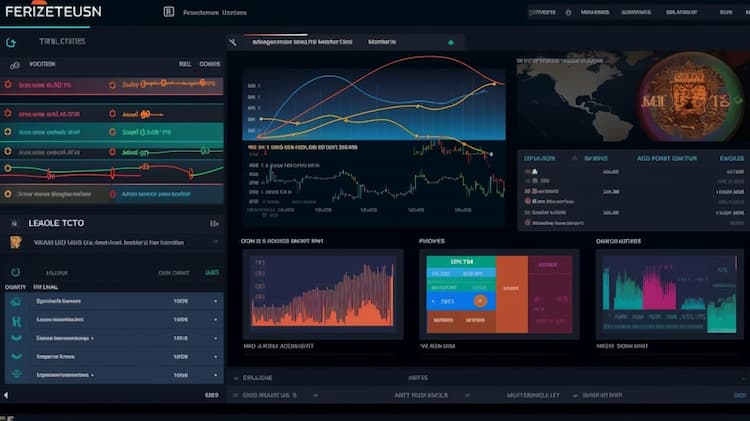
What are the best leveraged ETFs?
Leveraged ETFs offer investors the opportunity to amplify their returns by providing leveraged exposure to a specific market or asset class. These ETFs use financial derivatives and debt to provide investors with returns that are a multiple of the performance of the underlying index or asset. In this article, we will explore some of the best leveraged ETFs available in the market today.
Comparing Leveraged ETFs
One of the top leveraged ETFs in the market is the ProShares Ultra S&P 500 (Ticker: SSO). This ETF seeks to provide daily investment results that correspond to two times (2x) the daily performance of the S&P 500 Index. It is a popular choice for investors looking to gain leveraged exposure to the U.S. stock market.
Another similar leveraged ETF worth mentioning is the Direxion Daily S&P 500 Bull 2x Shares (Ticker: SPUU). Like SSO, this ETF aims to provide two times (2x) the daily performance of the S&P 500 Index. Investors should note that leveraged ETFs are designed for short-term trading and may not be suitable for long-term investors.
How do Leveraged ETFs Work?
Leveraged ETFs use financial instruments such as swaps, futures contracts, and options to achieve their leverage. These instruments allow the ETF to generate a multiple of the returns of the underlying index. For example, a 2x leveraged ETF will aim to provide returns that are twice the daily performance of the index it tracks.
It's important to understand that leveraged ETFs seek to achieve their daily investment objectives, which means their returns can deviate significantly from the index's returns over longer periods. This deviation is known as compounding, and it can work both in favor of and against the investor.
 best leveraged ETF,SSO,SPUU overlap What are the best leveraged ETFs?
best leveraged ETF,SSO,SPUU overlap What are the best leveraged ETFs?
Considerations for Investing in Leveraged ETFs
Investing in leveraged ETFs carries certain risks that investors should be aware of. Firstly, leveraged ETFs are designed for short-term trading and are not suitable for buy-and-hold investors. The compounding effect and daily resetting of leverage can result in returns that differ from the expected multiple over longer periods.
Secondly, leveraged ETFs are subject to higher volatility and increased risk compared to traditional ETFs. The use of derivatives and debt magnifies both gains and losses, making leveraged ETFs more suitable for experienced investors who can actively manage their positions.
Lastly, investors should carefully read the prospectus and understand the specific investment objectives, risks, and fees associated with the leveraged ETFs they are considering. Due diligence and a clear understanding of how these ETFs operate are crucial before making any investment decisions.
Conclusion
Leveraged ETFs can be attractive for investors looking to amplify their returns and gain leveraged exposure to specific markets or asset classes. However, they come with increased risks and are more suitable for short-term trading. The ProShares Ultra S&P 500 (SSO) and Direxion Daily S&P 500 Bull 2x Shares (SPUU) are two examples of leveraged ETFs that offer exposure to the S&P 500 Index. Before investing in leveraged ETFs, it is essential to thoroughly research and understand the unique characteristics and risks associated with these financial instruments.
Disclaimer: This article is for informational purposes only and does not provide any investment advisory services.
Sources:
[ProShares: proshares.com](URL: https://www.proshares.com)
[Investopedia: investopedia.com - Leveraged ETF](URL: https://www.investopedia.com)
FAQ
What are leveraged ETFs?
Leveraged ETFs are exchange-traded funds that aim to provide amplified returns, either on the upside or downside, compared to a specific underlying index or benchmark.
How do leveraged ETFs work?
Leveraged ETFs use financial derivatives, such as futures contracts and swaps, to achieve their desired level of leverage. They typically seek to provide a multiple (e.g., 2x or 3x) of the daily returns of the underlying index they track.
What are the risks associated with leveraged ETFs?
Leveraged ETFs can be highly volatile and are designed for short-term trading rather than long-term investing. They may experience significant losses if the underlying index performs poorly, and the effects of compounding can lead to deviations from the expected returns over longer periods.
What are some of the best leveraged ETFs?
It's important to note that the performance of leveraged ETFs can vary based on market conditions, and what may be considered "best" can change over time. Some popular leveraged ETFs include ProShares Ultra S&P 500 (SSO), Direxion Daily Financial Bull 3x Shares (FAS), and ProShares UltraPro QQQ (TQQQ).
What factors should I consider when investing in leveraged ETFs?
When investing in leveraged ETFs, it's crucial to carefully consider your risk tolerance, investment goals, and time horizon. Due to their amplified returns and potential for increased volatility, leveraged ETFs are generally better suited for experienced and active traders.









